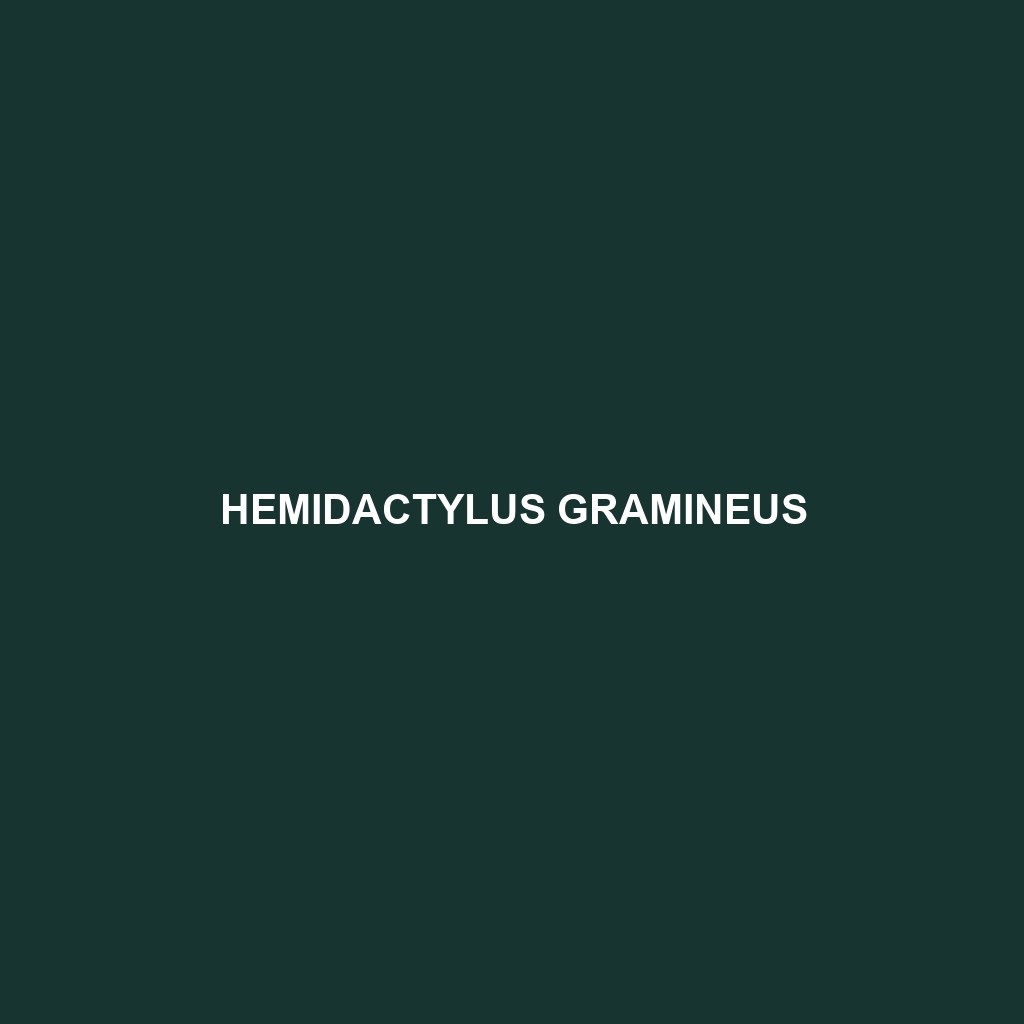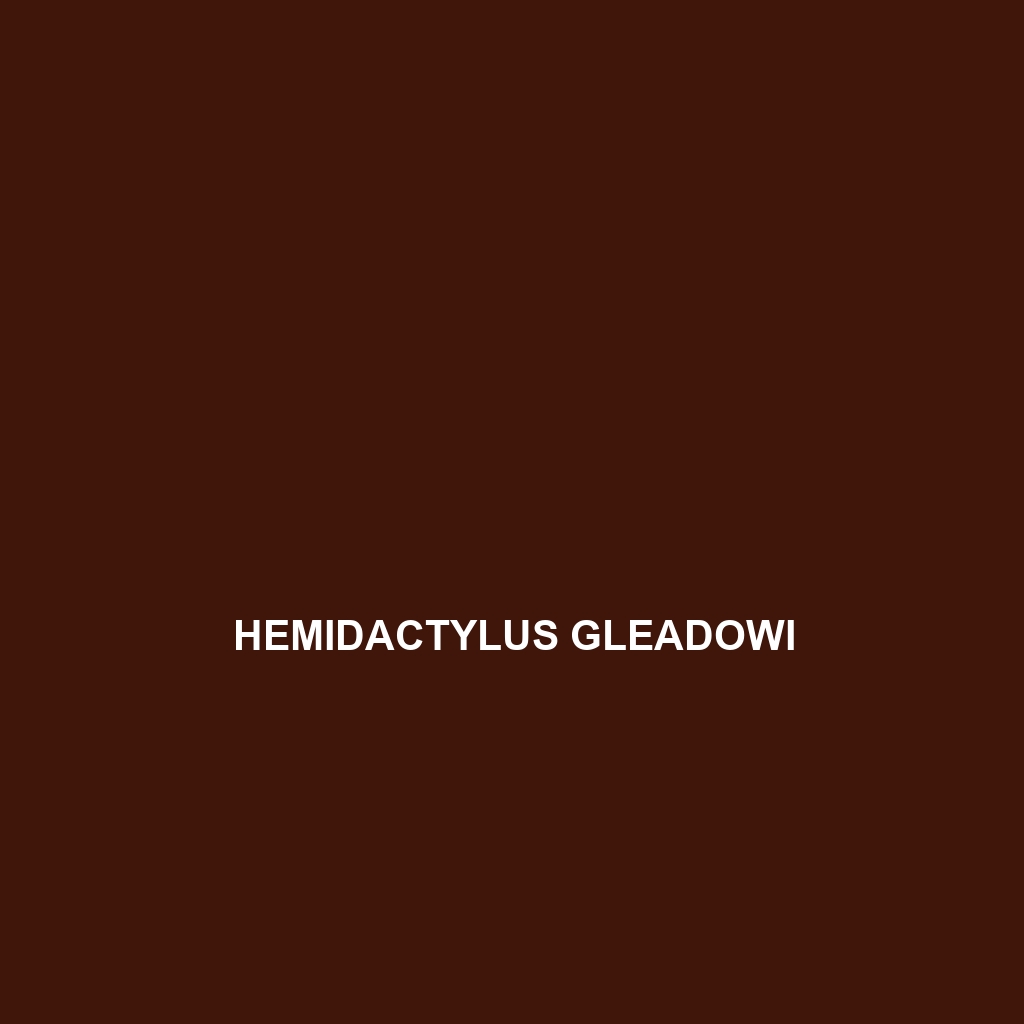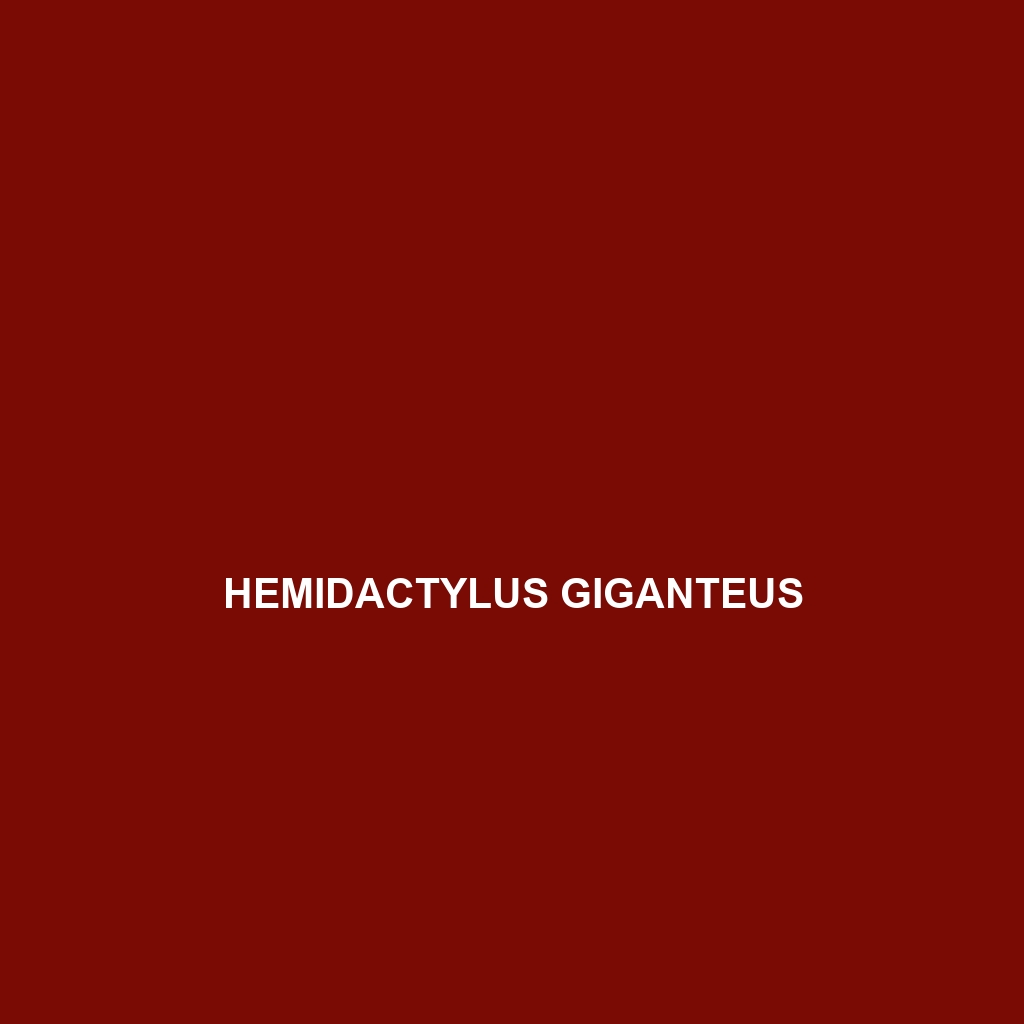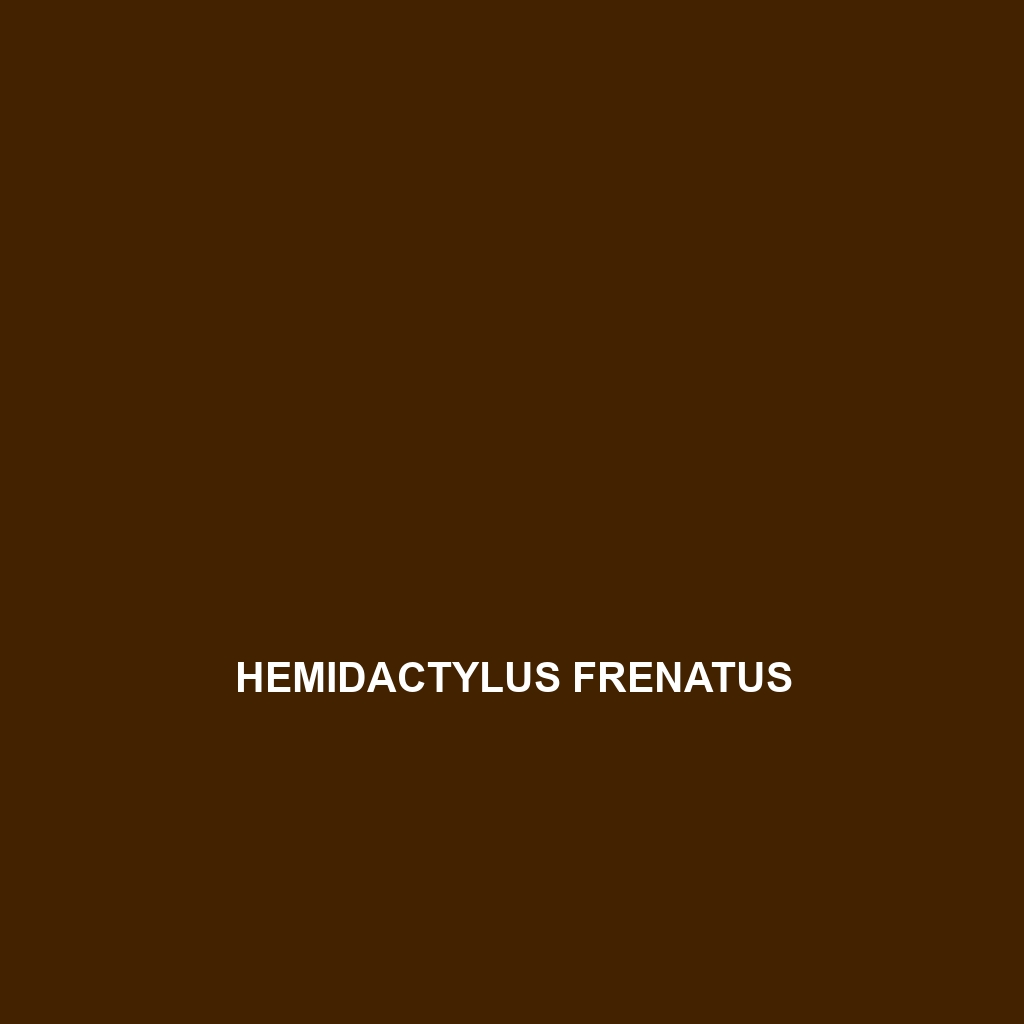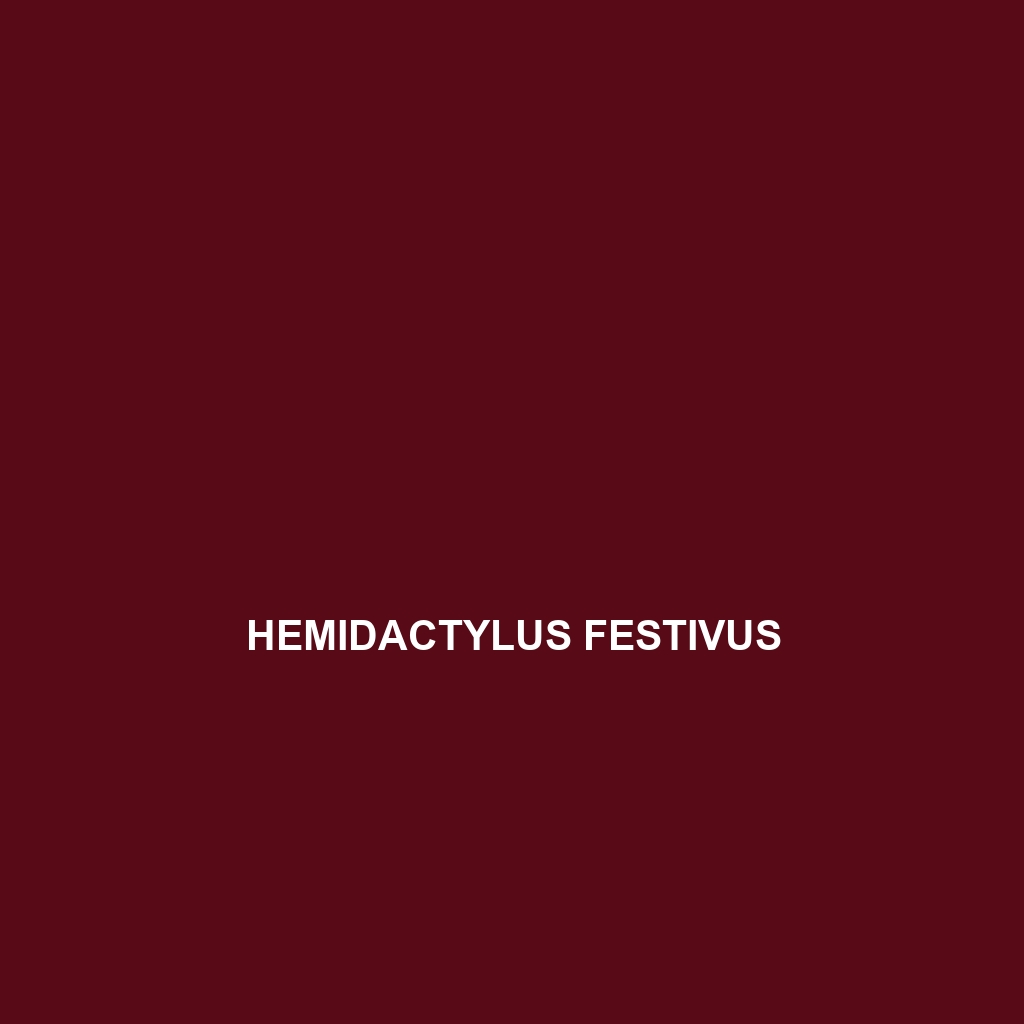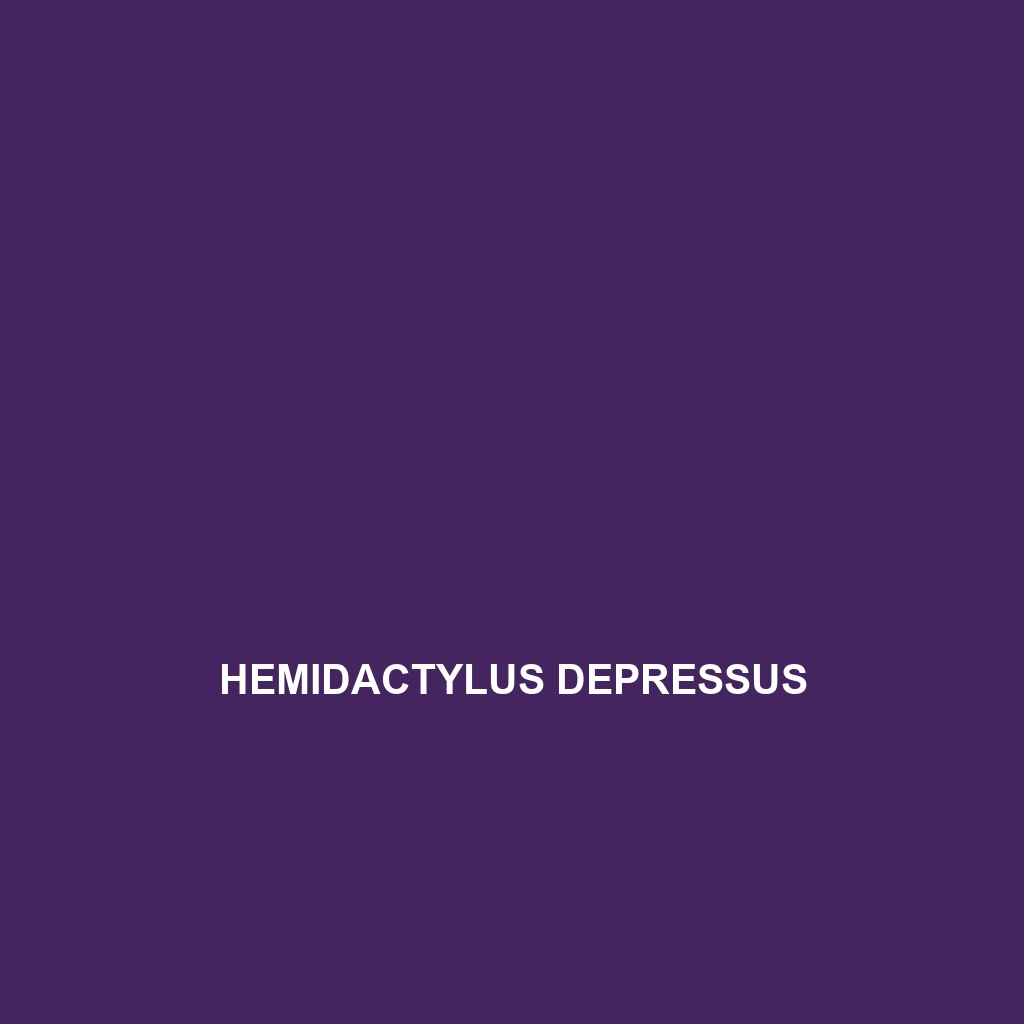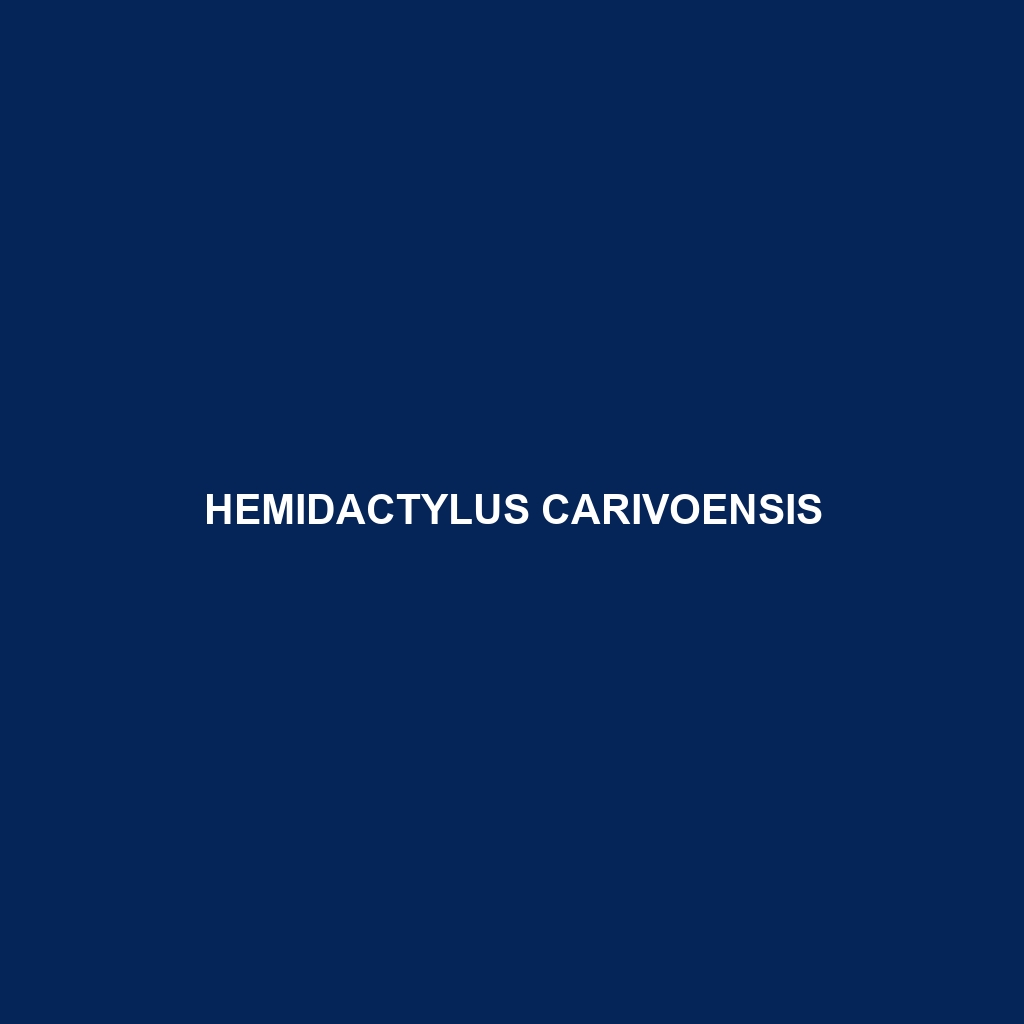Discover the Asian Garden Gecko (Hemidactylus gramineus), a vibrant, nocturnal insectivore thriving in warm, tropical habitats of Southeast Asia, known for its agility, unique camouflage, and ability to regenerate lost tails. This adaptable species plays a vital role in pest control and contributes significantly to the ecological balance.
Tag: Habitat Destruction
Hemidactylus gleadowi
Discover the Gleadow's gecko (Hemidactylus gleadowi), a nocturnal insectivore native to the tropical regions of Africa, known for its slender body, vibrant color patterns, and remarkable climbing abilities. This adaptable species plays a crucial role in its ecosystem by controlling insect populations and serving as a vital food source for larger predators.
Hemidactylus garnotii
Garnot's Gecko (Hemidactylus garnotii) is a nocturnal, insectivorous lizard native to tropical and subtropical regions of Southeast Asia, known for its distinctive brown and gray coloration, large expressive eyes, and remarkable ability to regenerate its tail. This adaptable species thrives in diverse habitats and plays a crucial role in controlling insect populations while exhibiting unique mating behaviors and vocalizations.
Hemidactylus frenatus
Discover the adaptable Hemidactylus frenatus, or house gecko, known for its slender body, adhesive toe pads, and nocturnal hunting habits. Thriving in various tropical and subtropical habitats, this insectivore plays a crucial role in controlling insect populations while showcasing remarkable resilience in urban environments.
Hemidactylus forbesii
Discover the <b>Hemidactylus forbesii</b>, or Forbes' gecko, a nocturnal and omnivorous reptile thriving in tropical and subtropical habitats, with a slender body that reaches up to 18 cm, distinctive large eyes for enhanced nighttime vision, and the ability to regenerate its tail. This adaptable species plays a vital role in controlling insect populations while being a crucial part of its ecosystem.
Hemidactylus festivus
Discover the fascinating Hemidactylus festivus, a small to medium-sized, nocturnal gecko native to tropical Africa, thriving in humid environments and coastal regions. Known for its vibrant colorations and exceptional climbing abilities, this insectivorous species plays a crucial role in regulating local insect populations.
Hemidactylus depressus
<p>The <b>Hemidactylus depressus</b>, commonly known as the depressed house gecko, is a small, nocturnal insectivore found in tropical rainforests and coastal regions. With a slender, flattened body and adhesive toe pads, this gecko exhibits fascinating behaviors such as territorial displays and courtship rituals, while playing a vital role in controlling insect populations and maintaining ecosystem balance.</p>
Hemidactylus carivoensis
The Carivoen Gecko (Hemidactylus carivoensis) thrives in warm, humid tropical rainforests of Central and South America, exhibiting vibrant colors for camouflage. This nocturnal insectivore plays a vital role in controlling insect populations while showcasing fascinating behaviors and adaptations, including the ability to autotomize its tail as a defense mechanism.
Hemidactylus bayonii
<p><b>Hemidactylus bayonii</b>, a medium-sized gecko reaching up to 15 cm, inhabits tropical and subtropical regions, thriving in humid environments like rainforests and savannas. Known for its excellent night vision and camouflage capabilities, this insectivore plays a crucial role in pest control within its ecosystem while demonstrating adaptability to urban settings.</p>
Hemidactylus arnoldi
<p>The <b>Arnold's leaf-tailed gecko</b> (<i>Hemidactylus arnoldi</i>) is a small, nocturnal insectivore native to Madagascar's tropical rainforests, known for its excellent camouflage and unique coloration. This species plays a vital role in its ecosystem by controlling insect populations and facilitating seed dispersal, although it currently faces threats from habitat destruction.</p>
